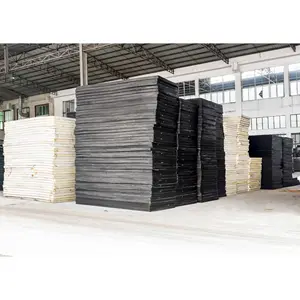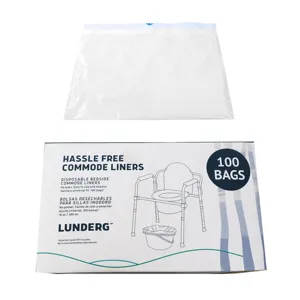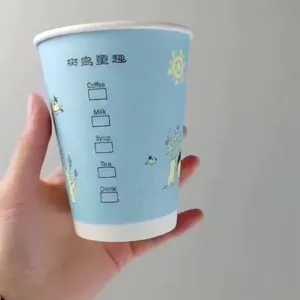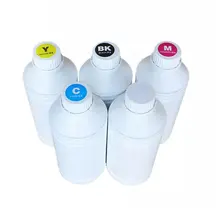Exploring Eco-Friendly Foam Alternatives
Innovative eco-friendly foam alternatives present sustainable, biodegradable, and health-conscious choices for a range of foam-utilizing applications. These alternatives are tailored for an eco-conscious market, where both individuals and corporations are in pursuit of products that reduce environmental impact without sacrificing performance or quality. Eco-friendly foam alternatives are grounded in sustainability's core tenets: reduce, reuse, and recycle. They are typically biodegradable, derived from renewable sources, or recyclable post-use, ensuring a minimal planetary footprint.
Environmentally aware manufacturers, businesses, and consumers, or those aligning with green practices, are the primary audience for these products. Eco-friendly foam alternatives are increasingly adopted in sectors such as construction, automotive, packaging, and personal care, offering sustainable substitutes for conventional foams. Adopters of these materials can support a healthier environment and may even lower their carbon footprint.
The functionality of eco-friendly foam alternatives hinges on their composition. They may incorporate natural materials like corn starch or bamboo fibers, which carry a smaller carbon footprint than petroleum-based counterparts. These foams leverage cutting-edge production techniques to meet industry benchmarks while delivering the requisite functionality. For example, biodegradable foams decompose into compost, enriching soil, whereas recycled foams from post-consumer plastics are a boon for the circular economy.
Varieties of Eco-Friendly Foam Alternatives
The spectrum of sustainable foam alternatives encompasses diverse types to suit various requirements and uses, each with distinct attributes and applications:
-
Plant-based Foams: Derived from natural sources like corn starch or sugarcane bagasse, these foams are commonly used in food packaging, beverage cups, and organic mattresses. Their biodegradability and renewable nature make them popular choices.
-
Recycled Foam Alternatives: Created from recycled plastics or foams, these alternatives find use in applications from construction materials to furniture padding. They are valued for their environmental benefits and cost-effectiveness.
-
Thermoplastic Elastomers (TPE): TPEs blend recycled rubber with plastic resins to produce foams that excel in shock absorption and flexibility. They are prevalent in sports equipment, shoe soles, and protective gear for their durability and eco-friendly profile.
-
Bio-based Foams: Made from renewable materials like corn starch or bamboo fiber, these foams are typically utilized in compostable packaging or as comfort-enhancing fillers in upholstered furniture.
-
Closed-cell Foams: Characterized by sealed cells that resist moisture absorption, these foams are suited for waterproofing or buoyancy needs, such as in swimming aids or marine vessels.
Selecting Eco-Friendly Foam Alternatives
When choosing eco-friendly foam alternatives for your enterprise, weigh the specific demands of your product and the environmental ethos of your clientele. The intended application – be it for packaging, insulation, or safeguarding products – will steer you to the most fitting material.
Assess the material's makeup; biodegradable options like PLA or PHA appeal to consumers desiring naturally decomposing products. If resilience is key, materials such as EVA or polyethylene might be preferable for their impact resistance.
Also, seek attributes that match your product's needs: waterproofing may be vital for outdoor equipment, while moisture resistance is crucial for items used in damp settings. Finally, factor in aesthetics – opt for materials that fulfill functional needs while enhancing your product line's visual and tactile appeal.
Eco-Friendly Foam Alternatives on Alibaba.com
Alibaba.com emerges as a premier global marketplace for businesses in search of sustainable packaging solutions, connecting buyers with a plethora of eco-friendly foam alternatives. The platform offers a variety of materials, from biodegradable corn starch and sugarcane bagasse to recycled paper and wood pulp, addressing diverse packaging needs with an emphasis on environmental stewardship.
Alibaba.com's vast network enables businesses to discover materials that resonate with their brand and customer expectations, whether it's waterproof packaging for skincare products or shock-resistant packaging for electronics. The platform's advanced filtering system allows for efficient selection based on features like biodegradability or recyclability.
Alibaba.com's dedication to smooth international trade is reflected in user-friendly mobile purchasing and multilingual communication tools. The site's Trade Assurance service bolsters buyer confidence by safeguarding payments until delivery is confirmed. For businesses aiming to green their supply chain, Alibaba.com is an invaluable ally.
Frequently Asked Questions on Eco-Friendly Foam Alternatives
What materials are commonly used to make eco-friendly foam alternatives?
Eco-friendly foam is typically produced from substances like natural latex, soybeans, and plant-based polyurethane, prized for their lower environmental impact and health advantages.
How do eco-friendly foam alternatives stack up against traditional foams?
Eco-friendly foams generally boast a reduced environmental footprint, owing to their composition and manufacturing process, and may also offer enhanced performance or diminished chemical emissions.
Is it possible to tailor eco-friendly foams for particular uses?
Indeed, many providers can adapt eco-friendly foams to meet bespoke application needs, including adjustments to material composition, dimensions, shape, and features like waterproofing or fire resistance.
Do any eco-friendly foam alternatives possess fire-retardant qualities?
Certain eco-friendly foams are imbued with fire retardants to satisfy specific safety criteria, making them desirable for adherence to building codes and safety regulations.
What factors should be considered when selecting an eco-friendly foam alternative for packaging?
In choosing an eco-friendly foam for packaging, consider the material's protective properties, cushioning capability, and whether it is biodegradable or reusable, ensuring alignment with your packaging requirements and sustainability objectives.
How can I ascertain the quality of an eco-friendly foam alternative?
Quality can be gauged by examining product details, certifications, and supplier reputations on Alibaba.com. Requesting samples before a bulk purchase can also provide a tangible quality assessment.
What certifications are indicative of eco-friendly foam alternatives meeting environmental and social standards?
Certifications such as CertiPUR, Global Organic Textile Standard (GOTS), and OEKO-TEX can signal compliance with certain environmental and social benchmarks.
Is there a standardized size or shape for eco-friendly foam alternatives?
While no standard size or shape exists, suppliers typically offer an assortment of dimensions and forms to accommodate various uses. Direct consultation with suppliers is recommended to confirm specifications for your particular needs.
Are eco-friendly foam alternatives suitable for medical devices or personal care items?
Certain eco-friendly foams are engineered for use in medical devices and personal care products. It's crucial to ensure that the material meets the requisite safety and regulatory standards prior to purchase.
What is the proper way to dispose of or recycle eco-friendly foam?
Disposal or recycling methods for eco-friendly foam depend on the foam type. Biodegradable or recyclable foams should be processed through suitable waste management systems. Local regulations should be consulted for specific disposal instructions.
Are there usage restrictions for certain eco-friendly foams in specific applications?
Although many eco-friendly foams are versatile, it's important to account for the particular environmental conditions and performance demands of each foam type. For instance, some foams may not be appropriate for high-temperature settings due to their melting points.
How does the cost of eco-friendly foam alternatives compare to that of conventional foams?
While eco-friendly foams may initially be more expensive due to their sustainable features, they can offer long-term savings through energy conservation or reduced need for chemical treatments.
Is it possible for businesses to request samples of eco-friendly foam alternatives before making a bulk order?
Many Alibaba.com suppliers provide sample orders of their eco-friendly foam alternatives, allowing businesses to evaluate material quality and suitability for their applications before a major purchase.
What should be considered for the international shipment of eco-friendly foams?
For international shipping, ensure that the selected foam complies with global standards for packaging and handling. Suppliers may offer specialized packaging solutions for the international transport of large foam quantities.











































 浙公网安备 33010002000092号
浙公网安备 33010002000092号 浙B2-20120091-4
浙B2-20120091-4